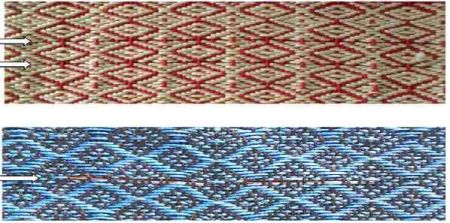Researchers in Canada have developed smart textiles that can monitor and transmit wearers' biomedical information via wireless or cellular networks. Multiple layers of polymers, copper, glass and silver were superimposed to create the smart fabric, according to researchers from Université Laval's Faculty of Science and Engineering and Centre for Optics, Photonics and Lasers.
"The fibre acts as both sensor and antenna. It is durable but malleable, and can be woven with wool or cotton. And signal quality is comparable to commercial antennas," said Professor Younès Messaddeq, Canada Excellence Research Chair in Photonic Innovations, and leader of the research team. In addition, the surface of the fibre can be adjusted to monitor a range of information such as heart rhythm, glucose levels, brain activity, movements, and spatial coordinates, Prof. Messaddeq explained.
This technological breakthrough, featured in a recent article in the scientific journal Sensors, paves the way for a host of new developments for people suffering from chronic diseases, elderly people living alone, and even firemen and police officers.
Although a patent application has already been filed, the research team noted that certain elements still need to be fine-tuned before the innovation is ready for commercialisation.
"Of course, the technology will have to be connected to a wireless network, and there is the issue of power supply to be solved," Prof. Messaddeq said. We have tested a number of solutions, and the results are promising. We will also have to make sure the fabric is robust, and can stand up to chemicals found in laundry detergent."
Electrical Cellulose Fibres Developed
Meanwhile, researchers at The University of Alabama (AL, USA) have developed a novel method for making electrical cellulose fibres. By using liquid salts during formation instead of harsh chemicals, fibres that conduct electricity can be strengthened, according to a patent issued to the UA research team.
The new method of crafting the fibres could open up normally flimsy materials, such as cotton, to conduct electricity in technologies normally reserved for stronger textiles, the research team noted. The process could also make conductive polymer composites, as they are called, less expensive to prepare with fewer harmful environmental side-effects.
Conductive polymers, which have wide-ranging physical and electrical properties, are used in various applications such as organic transistors, smart textiles, coatings for fuel cells, and electromagnetic shielding.
The UA team worked with polypyrrole, a particularly useful conductive polymer that can be difficult to bind to fibres. To turn the base chemical (pyrrole) into a polymer that can conduct electricity (polypyrrole), it is put through a chemical process using methanol and the iron-containing ferric chloride. Methanol, also called wood alcohol, is a volatile organic compound that is highly toxic to humans.
The patented method developed at UA would retain much of the fibres' strength by using ionic liquids, which are liquid salts at or near room temperature with low volatility that carry an electric charge. The ionic liquids do not degrade the fibres as much, and the process creates nanostructures that result in a stronger composite material. It also makes the composite better at conducting electricity, the researchers explained.
The patented process could impact what are known as smart textiles, clothing often with traditional electronic features woven into the fabric. The UA-developed method, though, could make it easier for the clothing itself to transmit the electric signals. Smart textiles could be used in protective clothing, medical textiles and other applications foreseen in military, medical, sports, industrial as well as consumer products.
"In the future, cloth or fabrics will not only protect the wearer, but also have intelligent built-in features, such as multifunctional sensors or computing devices," said Dr. Scott Spear, a research engineer with UA's Alabama Innovation and Mentoring of Entrepreneurs. "Conductive cotton fibre represents an important component in the development of smart materials for a variety of military, industrial and commercial applications."
Source: EureAlert.org/Phys.org
Image Credit: Stepan Gorgutsa, Universite Laval
"The fibre acts as both sensor and antenna. It is durable but malleable, and can be woven with wool or cotton. And signal quality is comparable to commercial antennas," said Professor Younès Messaddeq, Canada Excellence Research Chair in Photonic Innovations, and leader of the research team. In addition, the surface of the fibre can be adjusted to monitor a range of information such as heart rhythm, glucose levels, brain activity, movements, and spatial coordinates, Prof. Messaddeq explained.
This technological breakthrough, featured in a recent article in the scientific journal Sensors, paves the way for a host of new developments for people suffering from chronic diseases, elderly people living alone, and even firemen and police officers.
Although a patent application has already been filed, the research team noted that certain elements still need to be fine-tuned before the innovation is ready for commercialisation.
"Of course, the technology will have to be connected to a wireless network, and there is the issue of power supply to be solved," Prof. Messaddeq said. We have tested a number of solutions, and the results are promising. We will also have to make sure the fabric is robust, and can stand up to chemicals found in laundry detergent."
Electrical Cellulose Fibres Developed
Meanwhile, researchers at The University of Alabama (AL, USA) have developed a novel method for making electrical cellulose fibres. By using liquid salts during formation instead of harsh chemicals, fibres that conduct electricity can be strengthened, according to a patent issued to the UA research team.
The new method of crafting the fibres could open up normally flimsy materials, such as cotton, to conduct electricity in technologies normally reserved for stronger textiles, the research team noted. The process could also make conductive polymer composites, as they are called, less expensive to prepare with fewer harmful environmental side-effects.
Conductive polymers, which have wide-ranging physical and electrical properties, are used in various applications such as organic transistors, smart textiles, coatings for fuel cells, and electromagnetic shielding.
The UA team worked with polypyrrole, a particularly useful conductive polymer that can be difficult to bind to fibres. To turn the base chemical (pyrrole) into a polymer that can conduct electricity (polypyrrole), it is put through a chemical process using methanol and the iron-containing ferric chloride. Methanol, also called wood alcohol, is a volatile organic compound that is highly toxic to humans.
The patented method developed at UA would retain much of the fibres' strength by using ionic liquids, which are liquid salts at or near room temperature with low volatility that carry an electric charge. The ionic liquids do not degrade the fibres as much, and the process creates nanostructures that result in a stronger composite material. It also makes the composite better at conducting electricity, the researchers explained.
The patented process could impact what are known as smart textiles, clothing often with traditional electronic features woven into the fabric. The UA-developed method, though, could make it easier for the clothing itself to transmit the electric signals. Smart textiles could be used in protective clothing, medical textiles and other applications foreseen in military, medical, sports, industrial as well as consumer products.
"In the future, cloth or fabrics will not only protect the wearer, but also have intelligent built-in features, such as multifunctional sensors or computing devices," said Dr. Scott Spear, a research engineer with UA's Alabama Innovation and Mentoring of Entrepreneurs. "Conductive cotton fibre represents an important component in the development of smart materials for a variety of military, industrial and commercial applications."
Source: EureAlert.org/Phys.org
Image Credit: Stepan Gorgutsa, Universite Laval
Latest Articles
polymers, smart clothes, smart textiles, nanostructures, salts, cotton
Researchers in Canada have developed smart textiles that can monitor and transmit wearers' biomedical information via wireless or cellular networks. Multip...

























